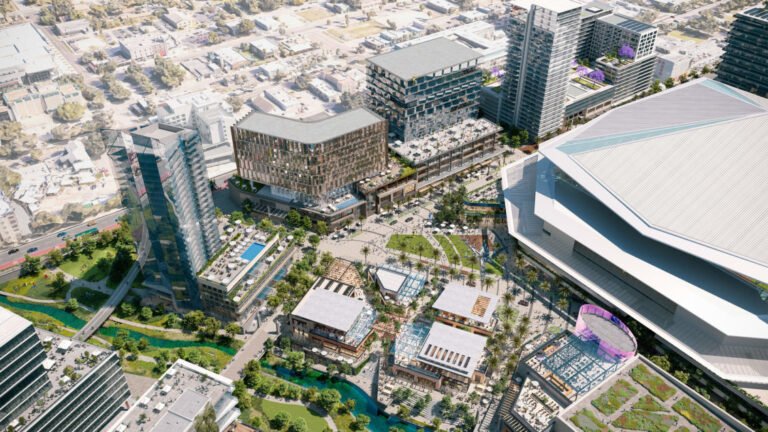
Contractor Mortenson will build a $1.3 billion stadium for Major League Baseball’s Tampa Bay Rays, a project intended to anchor billions in further development in the gas plant neighborhood of St. Petersburg, Florida.
Plans call for work on the public-private partnership to begin in January and be completed in time for an opening day in spring 2028. The city council still needs to complete approval of the project, with a meeting set on July 18. Its agenda includes an overview of the project and the passing of resolutions related to multiple development agreements.
One of the resolutions includes a vote on Skanska Building USA as the owner’s representative for the historic gas plant and new stadium project, along with the selection of Populous as the architect; Mortenson as director of construction at risk; and Finfrock Construction as designer-builder.
The stadium will be financed with $770 million from the Rays, $312.5 million from Pinellas County and $287.5 million from St. Petersburg, according to the Tampa Bay Timeswhich says the team will also be responsible for any cost overruns.
In a May 30 announcement of updated renderings, the Rays said the roughly 30,000-seat stadium will feature a three-deck design with a variety of seat types, including clubs and premium suites, flexible viewing areas, decks and social meeting spaces.
Each concourse will have a field view, with park and fan facilities to include an aquarium feature as a successor to the popular Rays Touch Tank experience at the team’s current home since 1990, Tropicana Field.
“Our ballpark will be the most intimate and welcoming ballpark in sports,” Rays president Matt Silverman said, adding that it “is designed to bring our fans as close to the field as possible, to create a distinctive and engaging gaming experience.”
Based on a pavilion design, the new stadium will feature a fixed roof, large windows and porches that play a key role in the stadium’s design, the team said.
Returning to the integral social role of porches in the gas plant neighborhood and throughout St. Petersburg, the front porch of the stadium will open onto a main square that will serve as a community gathering space in the historic district, a development very larger than expected. in the area, for which the stadium serves as a central element.
The city announced the $6.5 billion Gas Plant Historic District development plan last September to revitalize 86 acres of the neighborhood surrounding Tropicana Field over the next 20 years.
Houston-based developer Hines is leading the Hines Historic Gas Plant Partnership project, which aims to revitalize the city’s historic African-American neighborhood, which was displaced when Tropicana Field was built.
In addition to the stadium, the development will include approximately 8 million square feet of development, with more than 5,000 residential units, 600 affordable housing units on-site with 650 more elsewhere in the city, 1.4 million square feet square meters of office and medical space and 750 hotel rooms.

